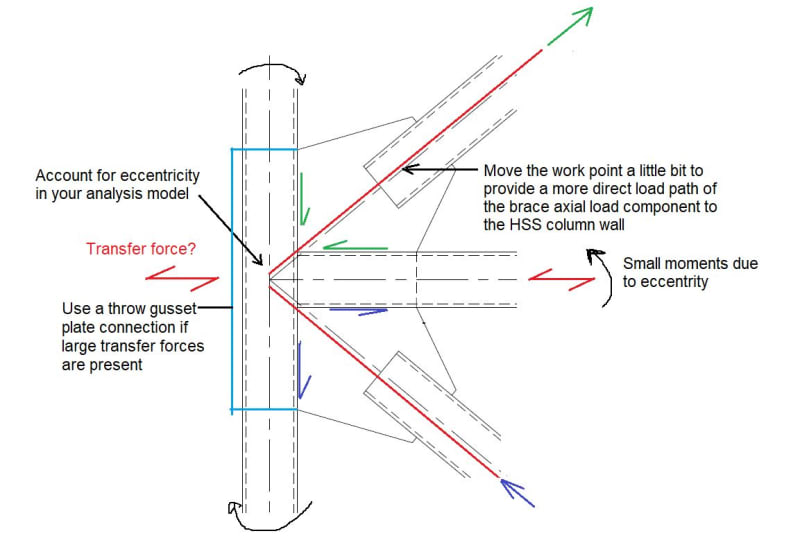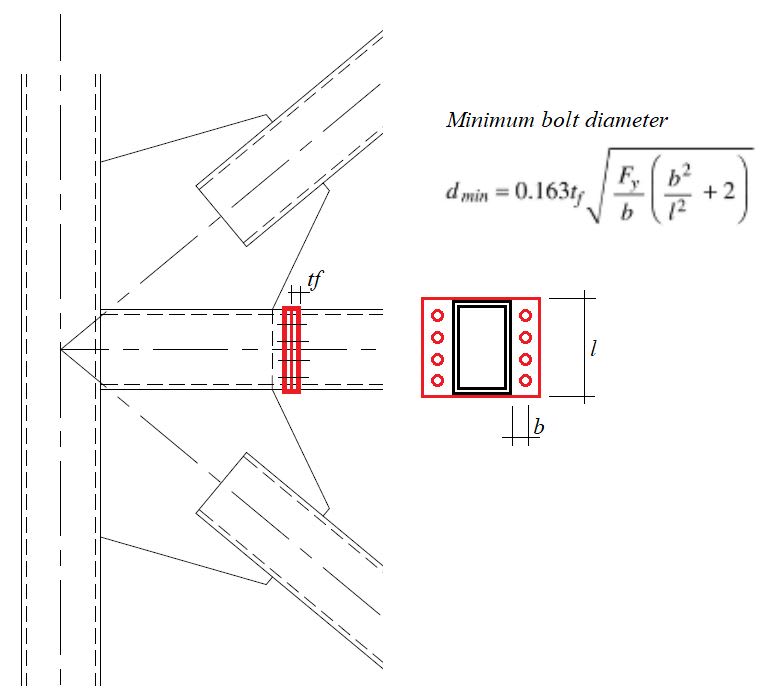I'm designing a structure with HSS columns, beams and braces in a high seismic area. I would like to use a SCBF to reduce the seismic design load. All the examples I've found use WF columns and beams with HSS braces. This is a tall piece of equipment that doesn't lend itself well to WF's. Has anyone done something like this before? I'm thinking of using a gusset plate to connect the braces to the beam and column but I'm not sure the column can handle the gusset plate load. I'll try running some numbers tomorrow but I was hoping somebody has been down this road before and can give me some tips.
I did think of running the plate all the way through the column but this has another wall framing into it at 90° so that wouldn't work. Besides, the shop would hate me if I did that.
Link
I did think of running the plate all the way through the column but this has another wall framing into it at 90° so that wouldn't work. Besides, the shop would hate me if I did that.
Link


